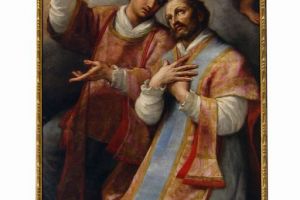The Co-cathedral of SS. Marziale and Alberto in Colle Val d'Elsa
The Origins
To understand the history of the city and its development, it is necessary to seek its origins far back in time. The necropolises of Dometaia and Le Ville, near the Elsa river, are visible traces today of Etruscan settlements at Colle, even if the real development of the city did not start until the Middle Ages. According to tradition, Colle came into contact with the first Christians as early as the ancient Roman period. Three historical figures played a crucial role in the conversion and growth of a community of Christians around the Elsa river: the first were Saints Faustinus and Jovita, who, tradition says, in flight from the Roman emperor Hadrian’s persecution of the Christians in the second century, were given shelter and aid in the hospital inside the castle of Piticciano, the oldest urban core which later gave rise to the town of Colle di Val d’Elsa. They were chosen as the titular saints of the ancient baptismal church, known as the Pieve a Elsa, since destroyed, which for a long time housed the Holy Nail. A century later, Saint Martial, a missionary bishop sent from Rome to evangelize the Gauls, reached the Gracciano plain, where he established a substantial community of Christians. According to legend, his traveling companion Austriclinianus died here and was buried where the church of San Marziale now stands. Brokenhearted, Martial returned to Rome to inform the . . .



